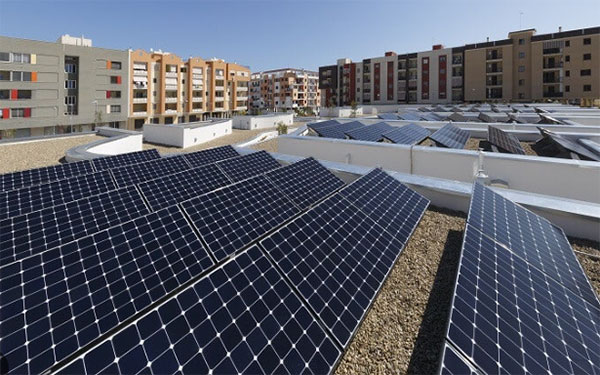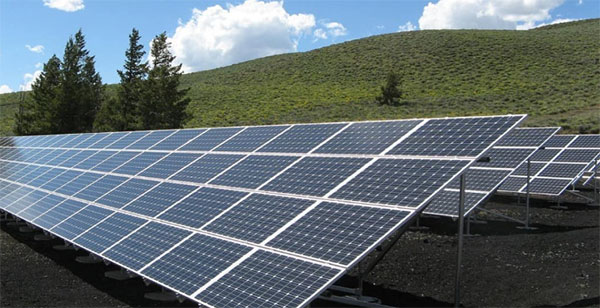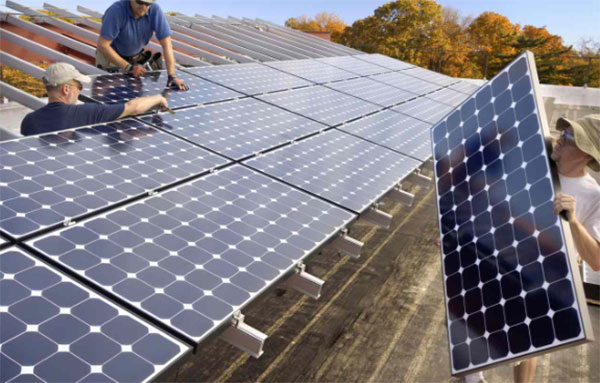Description
A 100-watt solar panel can run a small fridge with adequate battery storage and efficient energy use.

Refrigerator Power Requirements
Average Power Consumption of Refrigerators
Modern refrigerators typically consume between 100 to 800 watts of power, with the average household refrigerator using approximately 250 watts when running. The energy usage of a refrigerator largely depends on its size, model, and age. For example, a large, side-by-side refrigerator with a capacity of over 25 cubic feet might use around 780 watts, while a smaller, top-freezer model of about 18 cubic feet would generally use closer to 350 watts.
Newer models tend to be more energy-efficient, thanks to advancements in technology and stricter energy regulations. A refrigerator bought in the last five years, for instance, is likely to use less power than a model that's a decade old. The energy efficiency of refrigerators is often measured in terms of the annual energy consumption, with modern models averaging around 400-600 kilowatt-hours (kWh) per year.
Factors Affecting Refrigerator Energy Usage
Several factors influence the energy consumption of a refrigerator. Key among these are:
- Size and Capacity: Larger refrigerators require more energy to maintain cool temperatures. The power requirement increases with the internal volume and the surface area that needs to be cooled.
- Temperature Settings: Lower temperature settings increase energy usage. The recommended temperature setting for the fridge is between 35°F to 38°F (1.6°C to 3.3°C), and for the freezer, it is 0°F (-18°C).
- Usage Frequency: Frequent opening and closing of the refrigerator door cause it to lose cool air, making the compressor work harder and longer to maintain the set temperature.
- Placement and Ventilation: Refrigerators need adequate space for air circulation to operate efficiently. Poor ventilation or placement near heat sources like ovens can increase energy consumption.
- Maintenance and Age: Older refrigerators or those with worn seals, dirty coils, and outdated technology are less efficient. Regular maintenance can improve efficiency and extend lifespan.
- Defrost Mechanism: Manual defrost refrigerators generally consume less energy than frost-free models. However, if not regularly defrosted, they can become less efficient over time.
- Built-in Features: Additional features like ice makers, water dispensers, and external temperature controls can increase a refrigerator's energy consumption.
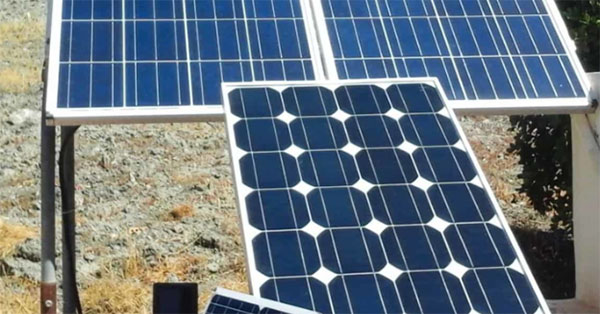
Compatibility of 100 Watt Solar Panels with Refrigerators
Determining whether a 100 watt solar panel can effectively run a refrigerator involves understanding both the output of the solar panel and the energy requirements of the refrigerator.
Calculating Energy Produced by a 100 Watt Solar Panel
A 100 watt solar panel, under ideal conditions, can generate approximately 100 watts of power. However, actual power output depends on several factors such as geographical location, weather conditions, panel orientation, and time of day. On average, a 100 watt panel produces about 400 watt-hours (Wh) of energy per day.
To calculate the total energy a solar panel can produce, one must consider the peak sunlight hours in a given location. For instance, if a location receives 4 peak sunlight hours per day, a 100 watt solar panel can generate roughly 400 watt-hours (100 watts x 4 hours) of energy daily.
Matching Solar Panel Output with Refrigerator Demand
The key to successfully powering a refrigerator with a solar panel lies in matching the solar panel's output with the refrigerator's demand. The average household refrigerator, as mentioned earlier, uses about 250 watts when running. However, it does not run continuously. Refrigerators cycle on and off, operating for about one-third of the time over a 24-hour period. Therefore, an average refrigerator may require about 2000 watt-hours (2 kWh) per day.
To meet this demand with a 100 watt solar panel, one must consider both the energy production capacity of the panel and the storage capacity of the battery system. A battery is essential for storing the energy generated by the solar panel, ensuring continuous power supply to the refrigerator, especially during non-sunlight hours.
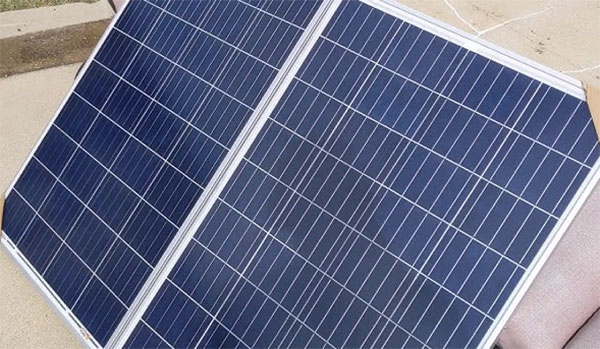
Installation and Setup Considerations
When installing a solar-powered refrigeration system, it's crucial to understand the components and steps involved to ensure efficient and reliable operation.
Necessary Components for Solar-Powered Refrigeration
To set up a solar-powered refrigeration system, you will need the following components:
- Solar Panel(s): The primary source of power. For a standard household refrigerator, multiple panels may be required to meet the energy demands.
- Charge Controller: Regulates the voltage and current coming from the solar panels going to the battery and prevents battery overcharging.
- Battery Bank: Stores electricity for use when solar energy is not available, like during the night. The capacity should match the refrigerator's energy requirements and the solar panel's output.
- Inverter: Converts DC electricity stored in the battery into AC electricity used by most refrigerators.
- Cables and Connectors: Necessary for connecting all the components. Ensure they are of appropriate size and type for your system.
- Mounting Equipment: For installing the solar panels in an optimal location.
Step-by-Step Guide to Connecting a Refrigerator to a Solar Panel
- Choose a Suitable Location: Place solar panels where they receive maximum sunlight. Ideally, the roof or an open ground space facing south (in the Northern Hemisphere).
- Install the Solar Panels: Securely mount the solar panels using the mounting equipment. Ensure they are stable and angled correctly for maximum sun exposure.
- Set Up the Charge Controller: Connect the solar panels to the charge controller. The charge controller should be close to the battery to reduce voltage drop.
- Connect the Battery Bank: Wire the batteries to the charge controller. If using multiple batteries, they must be correctly configured in series or parallel.
- Install the Inverter: Connect the inverter to the battery bank. This inverter should have sufficient capacity to handle the refrigerator's power requirements.
- Connect the Refrigerator: Plug the refrigerator into the inverter. Make sure the refrigerator is in a location that minimizes energy loss, away from heat sources and with good ventilation.
- Test the System: Check all connections, and then test the system by running the refrigerator. Monitor the system for a few days to ensure it operates smoothly.
Cost Considerations: The total cost depends on the components' quality and capacity. A basic setup might start from a few hundred dollars but can increase significantly for higher-capacity systems. Efficiency and longevity are key factors affecting the cost. High-efficiency solar panels and a quality battery bank might be more expensive initially but can offer better performance and longer lifespan.
Maintenance Requirements: Regular maintenance includes cleaning solar panels, checking batteries and connections, and ensuring the inverter operates efficiently. Proper maintenance extends the system's
lifespan and ensures consistent performance.
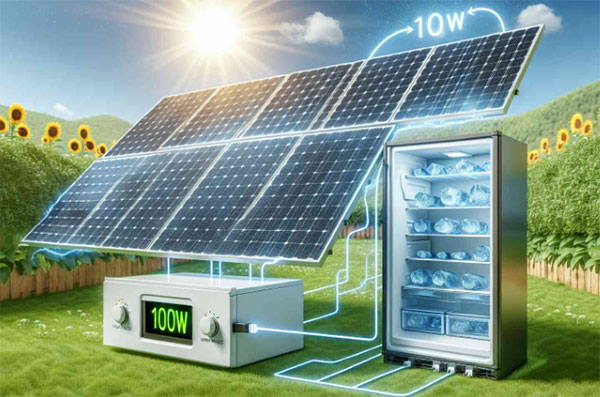
Optimizing Solar Panel Usage for Refrigeration
To ensure your solar-powered refrigeration system operates at peak efficiency, it's important to maximize the solar panel's performance and explore alternative solutions for situations where solar power might be insufficient.
Tips for Maximizing Solar Panel Efficiency
Maximizing the efficiency of solar panels is crucial for the optimal operation of a solar-powered refrigerator. Here are some tips:
- Optimal Placement: Install solar panels where they can receive direct sunlight for the longest period during the day. Generally, facing south in the Northern Hemisphere and north in the Southern Hemisphere.
- Correct Angle: Position the panels at an angle that captures the most sunlight. This angle varies depending on your geographic location.
- Regular Cleaning: Dust, debris, and bird droppings can reduce solar panel efficiency. Regular cleaning ensures maximum sunlight absorption.
- Avoiding Shade: Even a small shadow can significantly reduce a solar panel's output. Ensure there are no obstructions like trees or buildings casting shadows.
- Use High-Quality Equipment: Invest in a high-quality solar panel, battery, and inverter. Higher efficiency components can make a significant difference in performance.
- Regular Maintenance: Inspect and maintain your solar power system regularly. This includes checking the wiring and connections, monitoring the battery health, and ensuring the charge controller and inverter are functioning correctly.
- Temperature Management: Solar panels can overheat, reducing their efficiency. Ensure good air circulation around the panels to keep them cool.
Alternative Solutions for Insufficient Solar Power
In scenarios where the solar panel output is not sufficient to meet the refrigerator's power requirements, consider these alternative solutions:
Additional Solar Panels: Increasing the number of solar panels can enhance the system’s energy production capacity.
Battery Upgrades: Use a larger or more efficient battery bank to store more energy, which can be particularly useful during periods of low sunlight.
Hybrid Systems: Incorporate other forms of renewable energy, like wind turbines, or use a grid connection or generator as a backup power source.
Energy Saving Practices: Reduce the refrigerator's energy consumption by avoiding frequent opening, maintaining it well, and keeping it in a cool, ventilated space.
Upgrade to a More Efficient Refrigerator: Consider replacing the refrigerator with a more energy-efficient model. Modern, energy-efficient refrigerators consume significantly less power.
Demand Management: Use the refrigerator more during the day when solar power is abundant and reduce its use during the night or cloudy days.
Thermal Battery: Use a thermal battery or ice to keep the refrigerator cool without continuous power, especially useful during the night or low sunlight periods.





